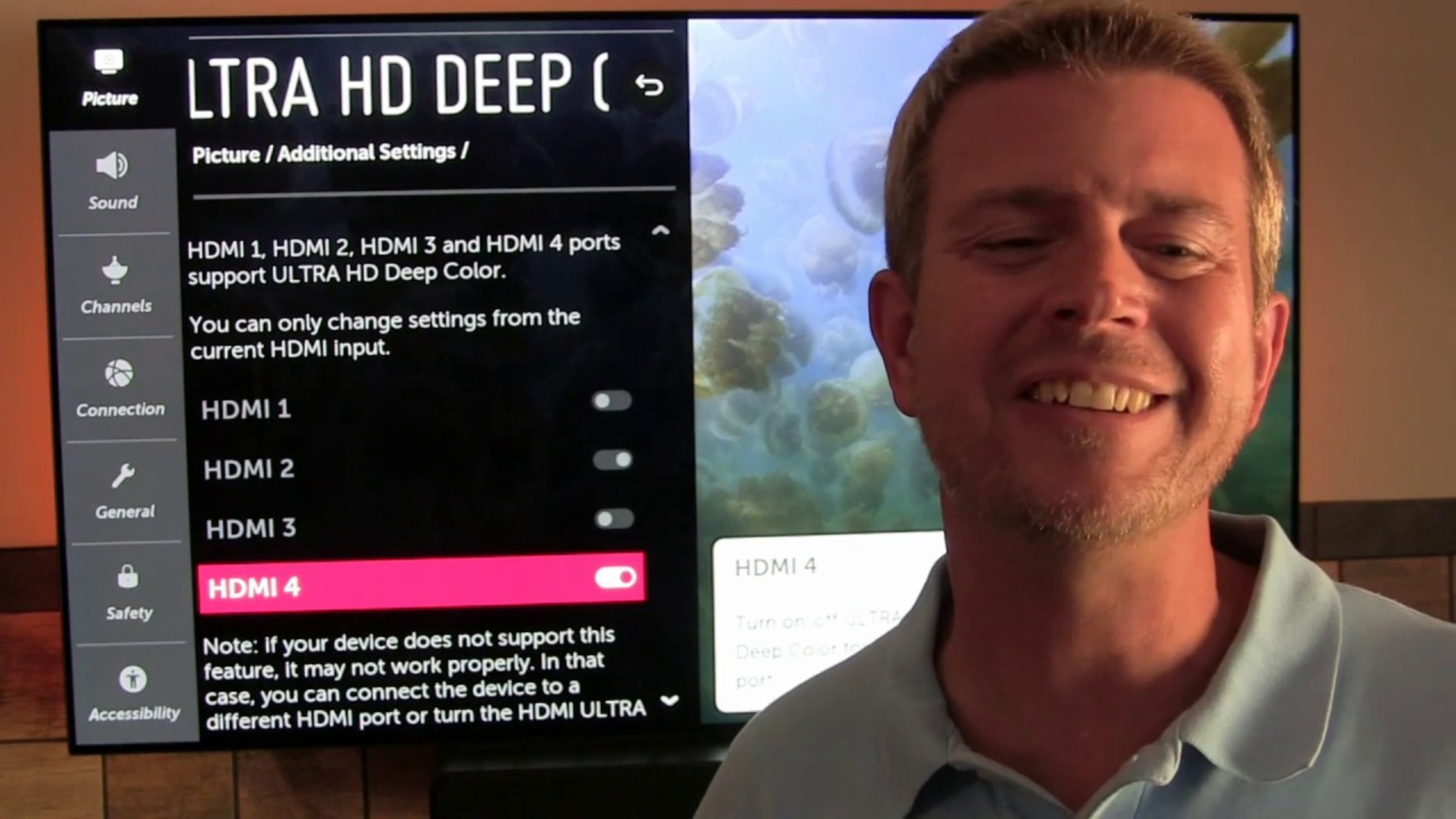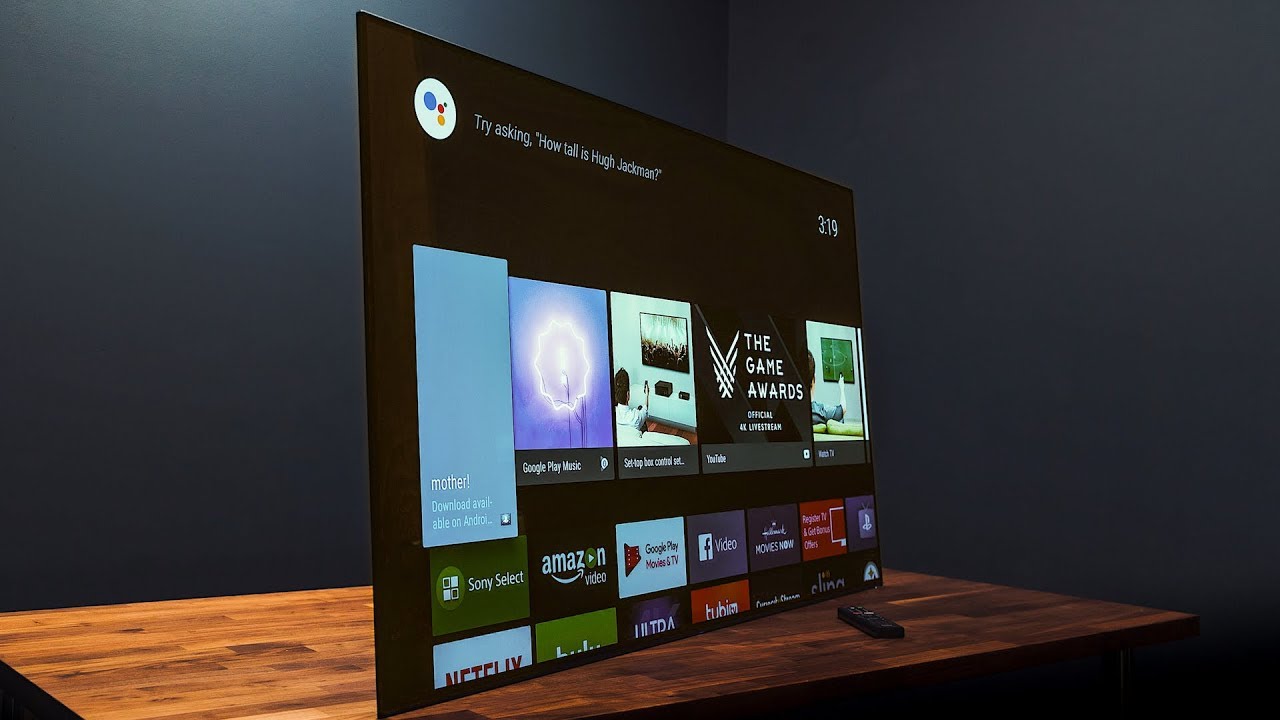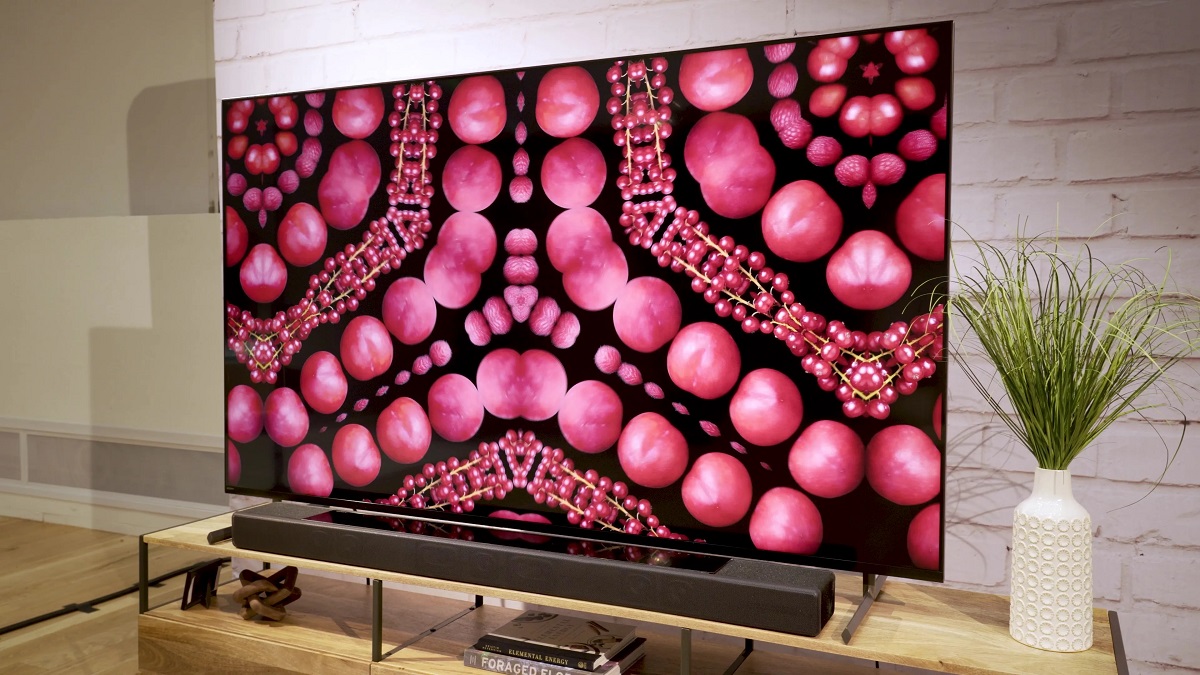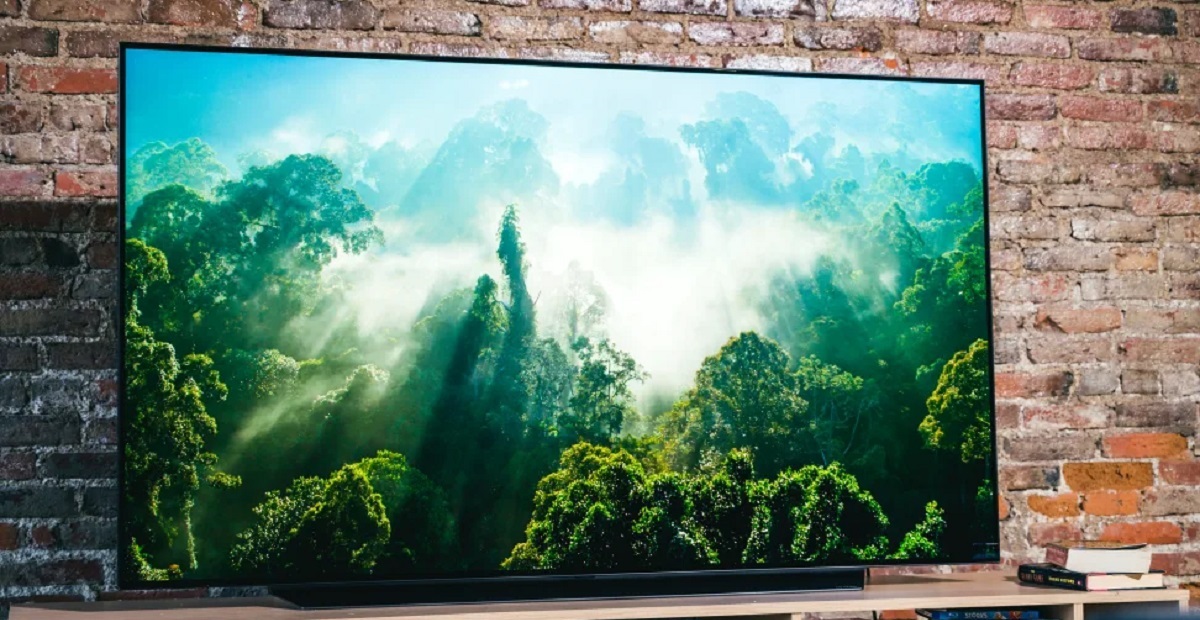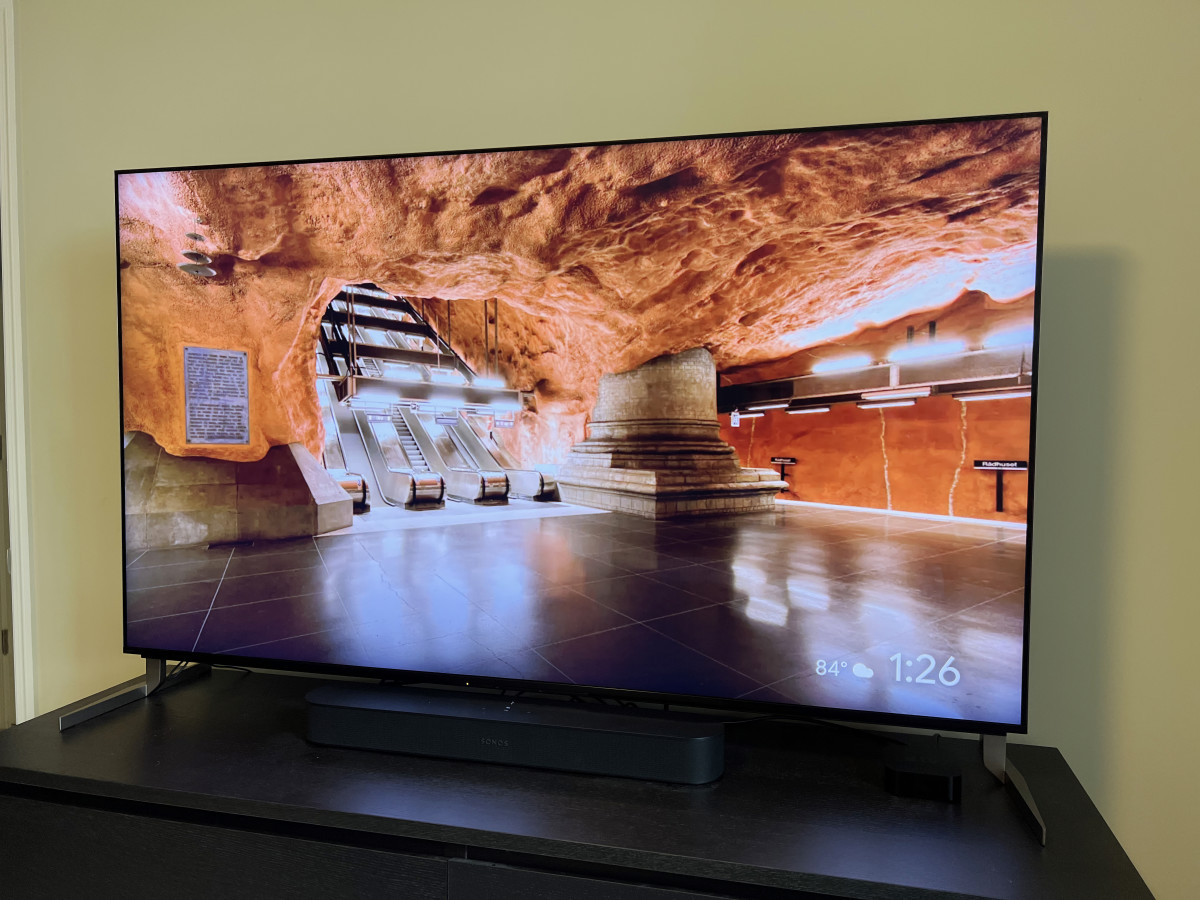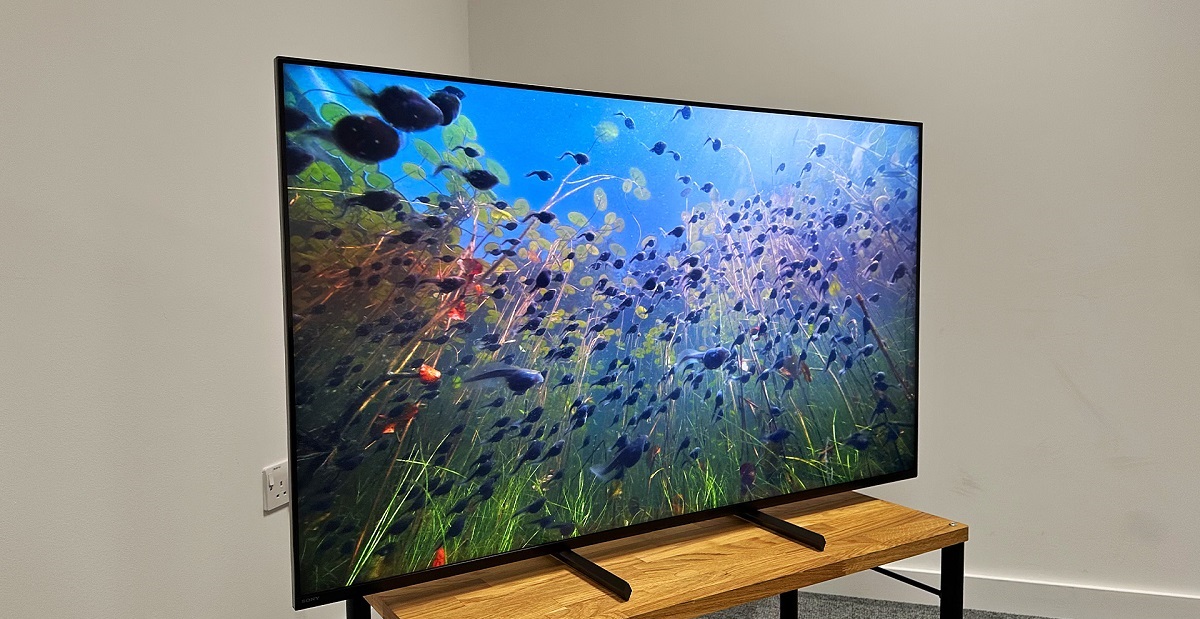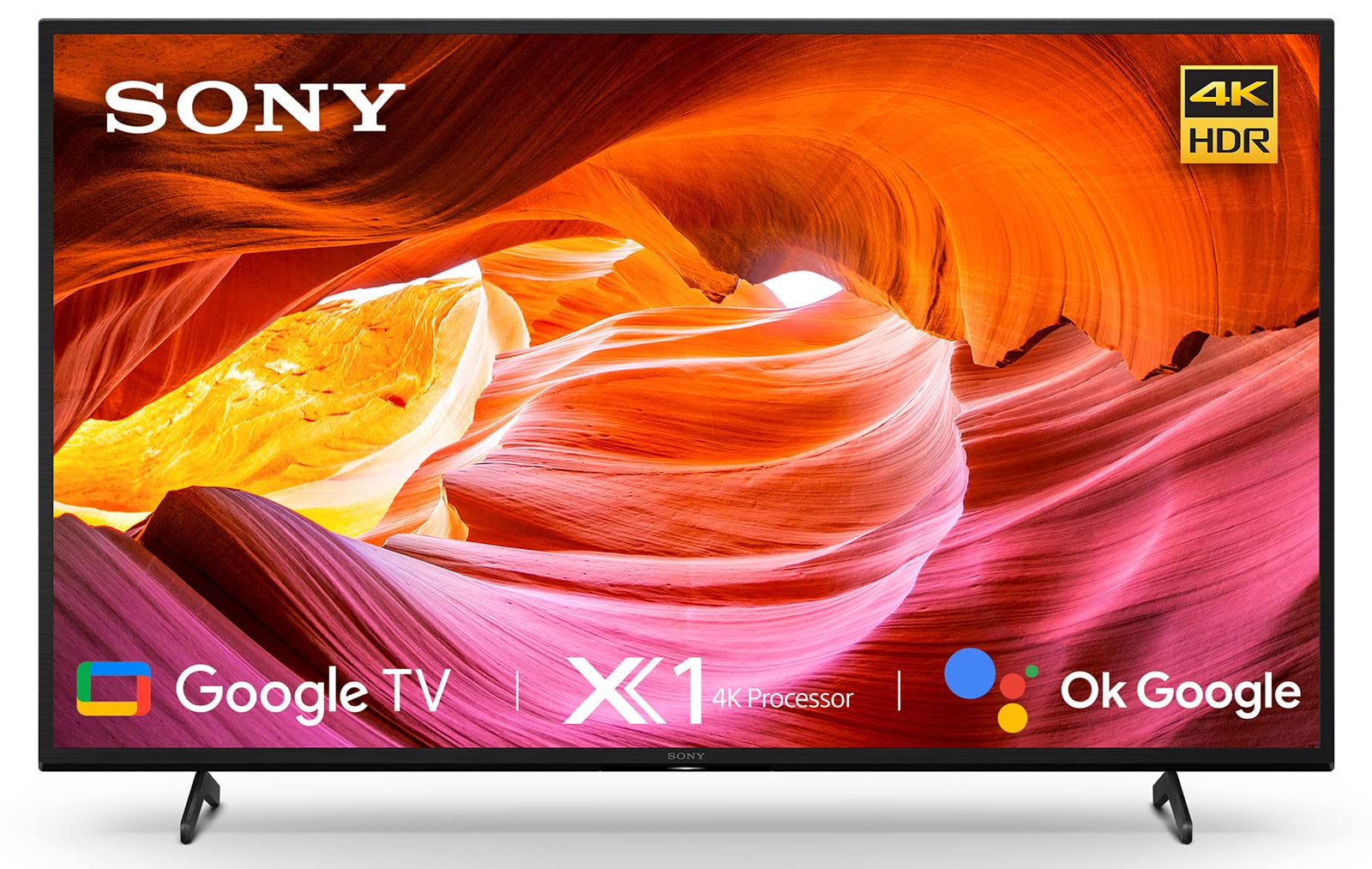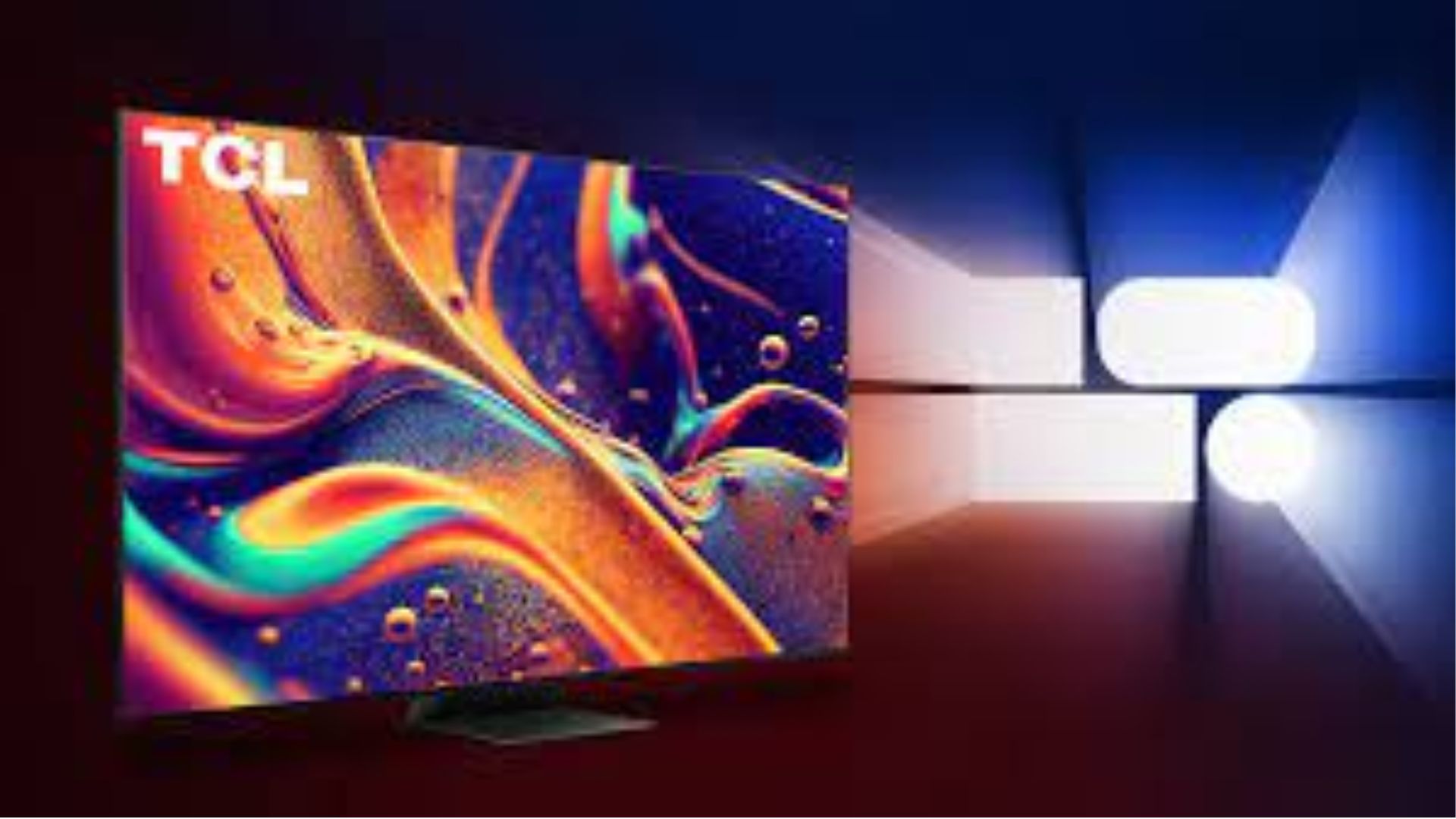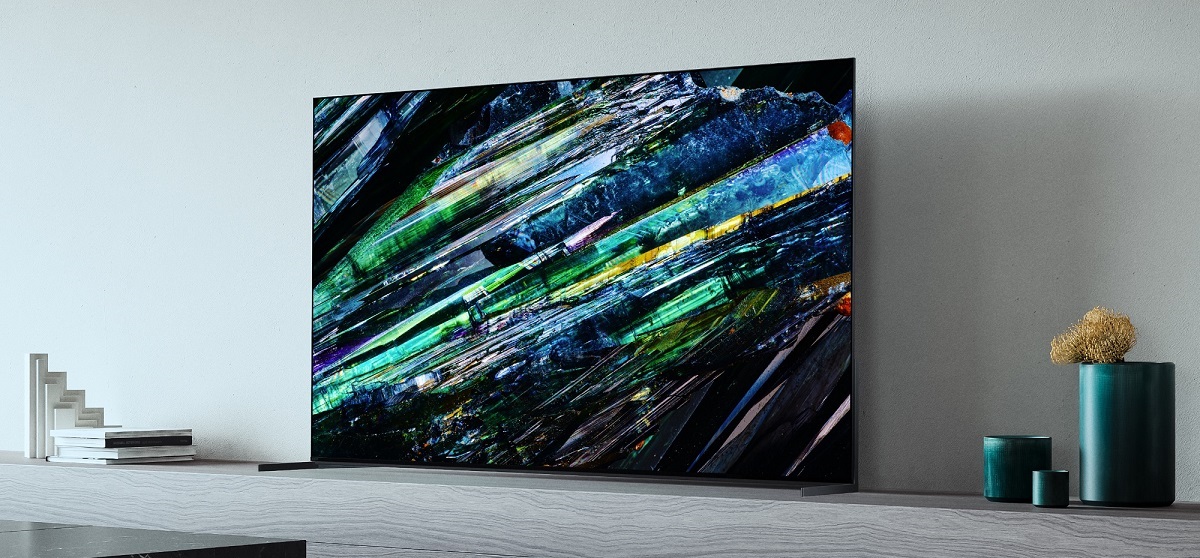Introduction
Welcome to the world of HDMI Ultra HD Deep Color! In this digital era where technology continues to evolve, the demand for high-definition visuals has become more prevalent than ever. Whether you’re a movie enthusiast, a gamer, or a multimedia professional, having the best possible visual experience is essential.
To achieve this, HDMI (High-Definition Multimedia Interface) has emerged as the industry standard for transmitting high-quality audio and video signals between devices. HDMI has revolutionized the way we connect devices such as televisions, cameras, gaming consoles, and more, bringing high-definition content to our screens with remarkable clarity and detail.
Just when you thought the visuals couldn’t get any better, along came Ultra HD, also known as 4K resolution. Ultra HD delivers four times the resolution of Full HD, providing incredibly sharp and lifelike images. With the increasing availability of Ultra HD content, it has quickly gained popularity among consumers who crave a breathtaking visual experience.
However, simply having Ultra HD resolution is not enough. To make the most of this advanced technology, we need a reliable and efficient way to transmit the massive amount of data required for Ultra HD content. This is where Deep Color comes into play.
Deep Color refers to the ability to display a wider range of colors and shades than standard color depths. With Deep Color, the visual experience becomes even more immersive and vibrant. Imagine watching a sunset with rich, realistic hues or playing a video game with vibrant and lifelike graphics. Deep Color brings out the true potential of Ultra HD content, making every pixel come to life.
Now, combining the power of Ultra HD and Deep Color, we have HDMI Ultra HD Deep Color. It is a feature that allows devices to transmit and display Ultra HD content with deep color depths, enhancing the overall visual experience dramatically.
In this article, we will explore the concept of HDMI Ultra HD Deep Color, the benefits it offers, and how you can enable it on your devices. Let’s dive into the world of stunning visuals and unleash the full potential of your Ultra HD content!
What is HDMI?
HDMI, which stands for High-Definition Multimedia Interface, is a digital interface that revolutionized the way audio and video signals are transmitted between devices. It has become the industry standard for connecting devices such as televisions, gaming consoles, Blu-ray players, and more, providing a seamless and high-quality multimedia experience.
Before HDMI, various analog connections were used, resulting in reduced image and sound quality. HDMI changed the game by introducing a single cable that carries both uncompressed high-definition video and multi-channel audio. This simplifies the setup process and eliminates the need for multiple cables, improving both convenience and performance.
HDMI supports a wide range of video and audio formats, including standard-definition, high-definition, and even 4K Ultra HD resolutions. It also supports various audio formats, including Dolby TrueHD and DTS-HD Master Audio, delivering immersive sound quality to complement the stunning visuals.
One of the key advantages of HDMI is its ability to transmit digital signals without any loss in quality. Unlike analog connections, which can suffer from interference and degradation, HDMI ensures a pristine signal from the source to the display device.
In addition to audio and video signals, HDMI also supports other data streams, such as Ethernet and control signals. This enables additional features like internet connectivity, device control, and enhanced functionality between HDMI-enabled devices.
HDMI cables and connectors come in various versions, with each version introducing new features and capabilities. It is important to note that older HDMI cables may not support the latest features, such as higher resolutions or advanced audio formats. Therefore, it is advisable to use the latest HDMI version compatible with your devices to make the most of the available features.
In summary, HDMI is a powerful and versatile interface that revolutionized the way we connect and experience audiovisual content. With its ability to transmit high-quality, uncompressed signals, support for various formats, and enhanced features, HDMI has become an essential component in modern multimedia setups.
What is Ultra HD?
Ultra HD, also known as 4K resolution, refers to a display technology that offers four times the resolution of Full HD. It provides incredibly sharp, detailed, and lifelike images, bringing visuals to a whole new level of clarity and realism.
Standard High-Definition (HD) resolution typically has a resolution of 1920 x 1080 pixels, but Ultra HD increases this resolution to 3840 x 2160 pixels. This means not only are there more pixels on the screen, but each pixel is also smaller, resulting in finer details and smoother images.
With Ultra HD, you can enjoy a level of detail that was previously unimaginable. Whether you’re watching movies, playing video games, or editing high-resolution content, every image appears incredibly sharp and vibrant, capturing even the finest nuances.
In addition to the increased pixel count, Ultra HD also supports a wider color gamut, known as Rec.2020 or BT.2020. This means that the range of colors displayed is more extensive and more accurate, resulting in richer and more vibrant visuals. With Ultra HD, you can truly see colors like never before, making your viewing experience more immersive and engaging.
Furthermore, Ultra HD content takes advantage of high dynamic range (HDR) technology, which offers enhanced contrast and brightness levels. HDR allows for a greater difference between the darkest blacks and the brightest whites, resulting in a more dynamic and lifelike image.
It’s important to note that to fully experience Ultra HD, you need a compatible display device, such as an Ultra HD television or monitor. These devices are designed to showcase the increased resolution and color capabilities of Ultra HD content. Additionally, Ultra HD content must be available and supported by the source device, such as a Blu-ray player or streaming service.
In summary, Ultra HD is a display technology that provides incredibly sharp and detailed images, offering four times the resolution of Full HD. With its increased pixel count, wider color gamut, and support for HDR, Ultra HD delivers a breathtaking visual experience, making every image come to life with stunning clarity and realism.
What is Deep Color?
Deep Color is a feature that allows for a wider range of colors and shades to be displayed on a screen. It surpasses the limitations of standard color depths, which can result in less realistic and vibrant visuals. With Deep Color, images and videos appear more lifelike, with richer and more accurate colors.
Standard color depths, such as 8-bit, can display up to 16.7 million colors. While this may sound impressive, Deep Color takes it a step further by supporting higher bit depths, such as 10-bit or even 12-bit. This results in a significantly larger color palette, with billions of possible colors and shades.
The increased bit depth of Deep Color allows for smoother color gradients and reduced banding. Banding refers to visible steps or transitions between colors, which can be distracting and diminish the overall visual quality. With Deep Color, these transitions are more seamless, resulting in a more natural and realistic image.
Deep Color not only enhances the richness and accuracy of colors but also allows for finer distinctions between shades. This means that subtle color variations, such as different shades of red or green, can be reproduced with greater precision. The result is a more nuanced and immersive visual experience that brings out the intricate details of the content being viewed.
Moreover, Deep Color also supports higher luminance levels. Luminance refers to the brightness or intensity of the colors displayed on the screen. With Deep Color, the brightness range is expanded, allowing for brighter highlights and darker shadows. This adds depth and realism to the image, making it more visually appealing and engaging.
It’s important to note that in order to take advantage of Deep Color, both the source device and the display device need to support it. This includes devices such as gaming consoles, Blu-ray players, televisions, and monitors. Additionally, the content being viewed must also be encoded with Deep Color information.
In summary, Deep Color is a feature that expands the color depth beyond the limitations of standard color depths. By supporting higher bit depths, Deep Color enables a wider range of colors and shades to be displayed, resulting in more vibrant, accurate, and realistic visuals. With finer distinctions between shades and enhanced luminance levels, Deep Color elevates the quality of the image, creating a more immersive and visually captivating experience.
What is HDMI Ultra HD Deep Color?
HDMI Ultra HD Deep Color is a cutting-edge feature that combines the power of Ultra HD resolution with the vibrant color palette of Deep Color. It allows devices to transmit and display Ultra HD content with higher color depths, resulting in an even more immersive and visually stunning experience.
With HDMI Ultra HD Deep Color, the standard 8-bit color depth of traditional HDMI is surpassed, enabling support for higher bit depths, such as 10-bit or 12-bit. This allows for a more extensive color range, with billions of possible colors and shades, bringing content to life with incredible depth and accuracy.
By incorporating Deep Color into the Ultra HD experience, HDMI Ultra HD Deep Color enhances the realism and vibrancy of visuals. From the rich and vivid hues of nature to the subtle skin tones in a movie, every detail is rendered with exceptional precision and finesse.
In addition to improved color reproduction, HDMI Ultra HD Deep Color also contributes to smoother and more seamless color gradients. With the increased bit depth, transitions between colors appear more natural, eliminating the distracting banding effect that can occur with lower color depths.
HDMI Ultra HD Deep Color not only benefits movies and TV shows but also elevates the gaming experience. Gamers can enjoy more lifelike and immersive graphics, with a wider color spectrum and smoother color transitions. This enhances the visual quality and realism of games, allowing players to fully immerse themselves in the virtual world.
It’s worth noting that in order to take advantage of HDMI Ultra HD Deep Color, both the source device and the display device must support this feature. This includes devices such as Ultra HD televisions, Blu-ray players, gaming consoles, and other HDMI-enabled devices. Furthermore, the content being transmitted must also be encoded with Ultra HD Deep Color information.
In summary, HDMI Ultra HD Deep Color combines the power of Ultra HD resolution with the expansive color range of Deep Color. This feature enhances the visual experience by allowing devices to transmit and display Ultra HD content with higher color depths, resulting in more vibrant, accurate, and immersive visuals. Whether you’re watching movies, playing games, or enjoying other multimedia content, HDMI Ultra HD Deep Color brings your entertainment to life in a whole new way.
Benefits of HDMI Ultra HD Deep Color
HDMI Ultra HD Deep Color offers a multitude of benefits that enhance the visual experience and take it to new heights. Let’s explore some of the key advantages of this cutting-edge feature:
1. Enhanced Color Accuracy: With the expanded color palette of Deep Color and the higher color depths of HDMI Ultra HD Deep Color, content is displayed with exceptional color accuracy. This means that every shade and hue is faithfully reproduced, resulting in more realistic and vibrant visuals.
2. Improved Visual Depth: By supporting higher luminance levels and smoother color gradients, HDMI Ultra HD Deep Color adds depth and dimension to the image. This creates a more immersive experience, making the content feel more lifelike and engaging.
3. More Nuanced Details: The increased color depth of HDMI Ultra HD Deep Color allows for finer distinctions between shades and gradients. This means that subtle details and textures in the content being viewed are preserved and showcased with greater precision, resulting in a more captivating viewing experience.
4. Immersive Gaming Experience: Gamers can greatly benefit from HDMI Ultra HD Deep Color. The vivid colors and enhanced depth bring games to life, making them more visually appealing and realistic. Every detail in the game world is rendered with stunning accuracy, adding to the immersion and enjoyment of gameplay.
5. Future-Proof Connectivity: HDMI Ultra HD Deep Color ensures that your devices are ready to handle the latest and most advanced content. As technology continues to evolve, having Ultra HD resolution and Deep Color support becomes increasingly important for staying up to date with the best visual quality available.
6. Seamless Compatibility: HDMI Ultra HD Deep Color is designed to seamlessly integrate with existing HDMI devices and cables. This means that you can take advantage of this feature without needing to upgrade your entire setup. Simply ensure that your source device and display device support HDMI Ultra HD Deep Color and use compatible HDMI cables for the best results.
Whether you’re a movie lover, gamer, or multimedia enthusiast, HDMI Ultra HD Deep Color brings your content to life with breathtaking visuals. The enhanced color accuracy, improved visual depth, and nuanced details contribute to a truly immersive experience. With HDMI Ultra HD Deep Color, you can enjoy content as it was envisioned, with rich, vibrant colors and stunning clarity.
How to Enable HDMI Ultra HD Deep Color
Enabling HDMI Ultra HD Deep Color on your devices is a straightforward process. Here are the general steps to follow:
1. Check device compatibility: First, make sure that both your source device (e.g., Blu-ray player, gaming console) and your display device (e.g., television, monitor) support HDMI Ultra HD Deep Color. Consult the user manuals or specifications of your devices to confirm their compatibility.
2. Access display device settings: Using your display device’s remote or on-screen menu, navigate to the settings or picture settings menu.
3. Find the Deep Color or HDMI settings: Look for the settings related to HDMI or color depth. It may be called “Deep Color,” “HDMI Color Mode,” “HDMI Ultra HD Color,” or something similar. The location and naming may vary depending on the manufacturer and model of your device.
4. Enable HDMI Ultra HD Deep Color: Once you’ve located the appropriate setting, toggle it on or enable it. Some devices may provide options for different levels of color depth, such as 10-bit or 12-bit. Choose the desired setting based on your device’s capabilities and personal preference.
5. Save the changes: After enabling HDMI Ultra HD Deep Color, save the settings and exit the menu. Your display device is now configured to support and display content with the enhanced color depth.
It’s important to note that the steps may vary slightly depending on the make and model of your devices. If you’re unsure about specific instructions, refer to the user manuals or consult the support resources provided by the manufacturer.
Furthermore, it’s advisable to use high-quality and HDMI-certified cables to ensure optimal performance. Lower quality cables may not support the necessary bandwidth for HDMI Ultra HD Deep Color, potentially resulting in degraded image quality or connectivity issues.
By following these steps and confirming compatibility, you can easily enable HDMI Ultra HD Deep Color and unlock the full visual potential of your content. Enjoy the vibrant and immersive experience that comes with deeper color depths and lifelike visuals!
Compatibility with Devices
Compatibility is a crucial factor when it comes to HDMI Ultra HD Deep Color. To ensure proper functionality and the best visual experience, it’s important to consider the compatibility of your devices. Here’s what you need to know:
1. Source Devices: For HDMI Ultra HD Deep Color support, your source device, such as a Blu-ray player, gaming console, or streaming device, must have the capability to output content with higher color depths. Check the specifications of your source device to ensure it supports HDMI Ultra HD Deep Color.
2. Display Devices: Your display device, such as a television or monitor, should also be compatible with HDMI Ultra HD Deep Color. Verify that your display device supports this feature by referring to the manufacturer’s specifications or consulting the user manual.
3. HDMI Version: HDMI Ultra HD Deep Color is typically introduced in later HDMI versions, such as HDMI 2.0 or higher. Ensure that both your source device and display device support the required HDMI version to take advantage of the enhanced color depths.
4. HDMI Cables: To transmit the higher color depths required for HDMI Ultra HD Deep Color, it’s essential to use HDMI cables that support the necessary bandwidth. Look for HDMI cables labeled as “High-Speed” or “Premium High-Speed” to ensure they can handle the increased data transfer rates. Using lower quality or older HDMI cables may result in connectivity issues or limited functionality.
5. Content Compatibility: HDMI Ultra HD Deep Color is applicable when consuming content that is encoded with higher color depths. Ensure that your content, whether it is a Blu-ray disc, streaming service, or other media, is compatible with HDMI Ultra HD Deep Color. Check the specifications or settings of your content playback device to confirm its support for this feature.
6. Firmware Updates: Keep in mind that devices often receive firmware updates that can introduce new features or enhance compatibility. Regularly check for firmware updates for your source and display devices to ensure they are up to date and can provide the best possible compatibility with HDMI Ultra HD Deep Color.
By considering the compatibility of your source devices, display devices, HDMI versions, cables, content, and firmware updates, you can ensure a seamless and optimal HDMI Ultra HD Deep Color experience. Prioritize compatibility to unlock the full potential of your devices and enjoy stunning visuals with deeper color depths.
Conclusion
HDMI Ultra HD Deep Color brings the world of captivating visuals to a new level. By combining the power of Ultra HD resolution with the expanded color depths of Deep Color, this feature enhances the visual experience and allows for more vibrant and lifelike images.
With HDMI Ultra HD Deep Color, you can enjoy content with enhanced color accuracy, improved visual depth, and more nuanced details. Whether you are watching movies, playing games, or indulging in multimedia content, every frame comes alive with incredible realism and vibrancy.
Enabling HDMI Ultra HD Deep Color is a simple process that involves verifying compatibility, accessing display device settings, and enabling the feature. By following the necessary steps, you can unlock the full potential of your devices and enjoy the breathtaking visual experience that HDMI Ultra HD Deep Color offers.
It’s essential to ensure compatibility between source devices, display devices, HDMI versions, cables, content, and firmware updates. By considering these factors, you can ensure a seamless and optimized performance of HDMI Ultra HD Deep Color.
So, whether you’re a movie enthusiast seeking immersive visuals, a gamer looking for realistic graphics, or a multimedia professional requiring accurate color reproduction, HDMI Ultra HD Deep Color is a game-changer.
Embrace the world of stunning visuals and elevate your entertainment experience with HDMI Ultra HD Deep Color. Immerse yourself in a new era of visual excellence that brings your content to life with vibrant colors, lifelike details, and unparalleled realism.







